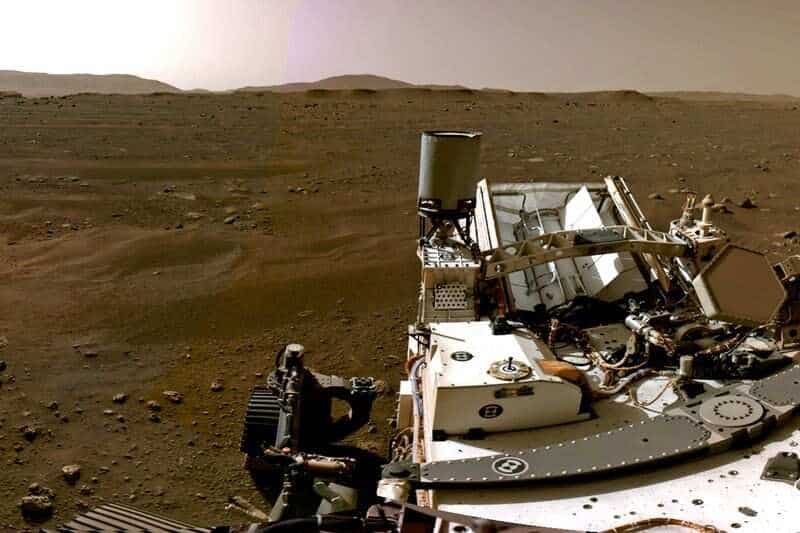

NASA’s Perseverance Rover Gives High-Definition Panoramic View of Landing Site
Why In News?
NASA’s Perseverance rover captures panoramic view of Mars crater.
About the mission
The Mars 2020 Perseverance Rover will search for signs of ancient microbial life, which will advance NASA's quest to explore the past habitability of Mars.
The rover has a drill to collect core samples of Martian rock and soil, then store them in sealed tubes for pickup by a future mission that would ferry them back to Earth for detailed analysis.
Perseverance will also test technologies to help pave the way for future human exploration of Mars.
Strapped to the rover's belly for the journey to Mars is a technology demonstration the Mars Helicopter, Ingenuity, may achieve a "Wright Brothers moment “ by testing the first powered flight on the Red Planet.
There are also several firsts in this mission. The rover carries two very sensitive microphones which will listen to Martian sounds like the wind or the rover moving on the Martian soil.
Most interestingly, it carries a small, 2 kg helicopter in its belly which it will lower to the surface.
This will be a technological tour-de-force since the Martian atmosphere is extremely thin compared to the Earth.
The rover landed in a depression called the Jezero crater which is at the edge of what was once a river delta when Jezero was filled with water.
The crater is surrounded by high cliffs, large boulders and sand dunes, all of which made the landing extremely treacherous.
What makes Jezero interesting is that it is the oldest terrain to be explored on Mars some of the minerals there might have formed almost 3.5 billion years ago.
The rover is to move around the crater and collect rock samples. Thus what we have here is a roving, robotic Martian geologist.
Background:
The Perseverance Rover was launched from Cape Canaveral Air Force Station, Florida on July 30, 2020 made its landing on an ancient river delta in a lake that once filled Jezero Crater.
The Perseverance rover carried seven instruments to conduct an "unprecedented science and test new technology on the Red Planet".

Objectives of the mission
Perseverance is part of a multi-decadal Mars exploration programme which aims to study the formation, evolution and structure of the Red planet.
The programme will also investigate the possibility of past or present life as well as the potential for human exploration of Mars.
This was, of course, not the first landing on Mars starting in 1971 when the Soviet Mars 3 lander became the first spacecraft to safely land on the planet to NASA’s InSight lander in 2018, there have been several landings over the last five decades. In addition to the landings, which are technically very challenging, there have been many missions which have explored Mars from orbiting spacecraft. Our own, Mangalyaan, has been in an orbit around Mars for over six years now.
- NASA has been sending rovers on Mars since 1997 when the Mars Pathfinder Mission was initiated.
- As the mission turned out to be successful, NASA decided to continue going to Mars to find evidence.
- Second time, the space organization sent twin rovers, Spirit and Opportunity to Mars in 2003.
- The third attempt was by sending Curiosity in 2012.
